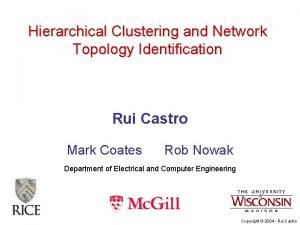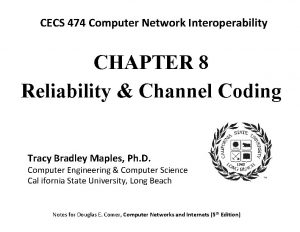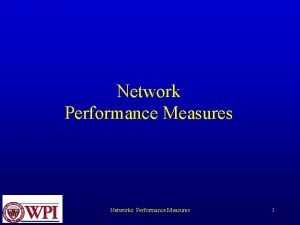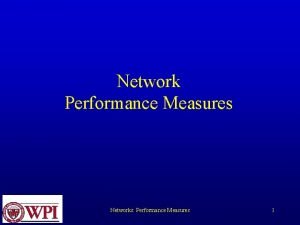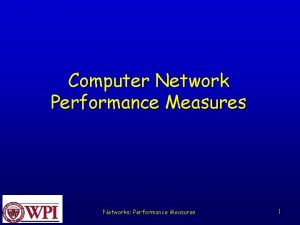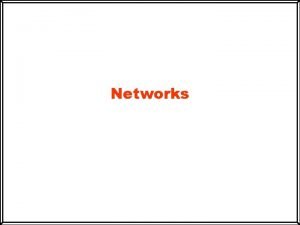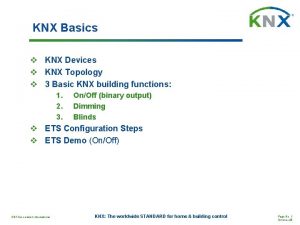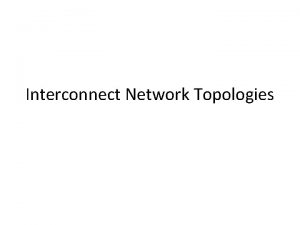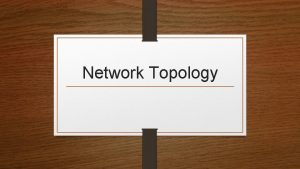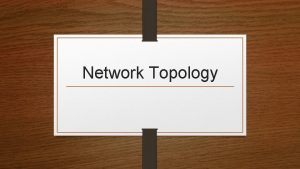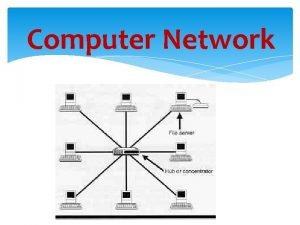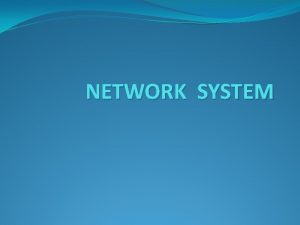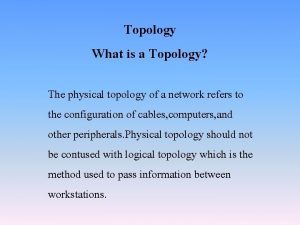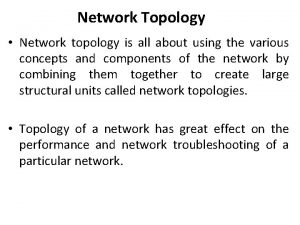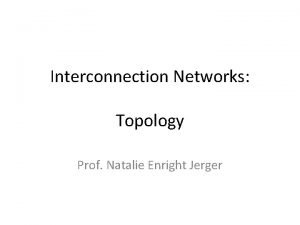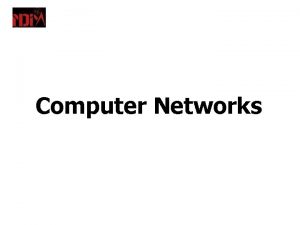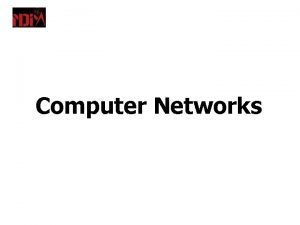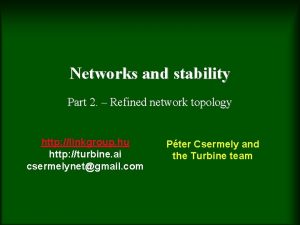Computer Networks Part 2 Topology Network Topology Network
















- Slides: 16

Computer Networks Part 2 Topology

Network Topology

Network Topology Ø Topology means “arrangement” or “layout” Ø Network Topology: • How the different parts of a network are arranged and connected together. Ø Network Topologies: v. Bus v. Ring v. Star v. Mesh v. Hybrid

Criteria for Topology Selection Ø Cost Ø Ease of maintenance Ø Ease of installation Ø Cable fault tolerance

Bus Topology One single network cable is used from one end of the network to the other end.

Bus Topology Ø Advantages v. Simple to install v. Cheap to install v. Less cable is used compare to any other topologies Ø Disadvantages v. If main cable is damaged, the whole network will fail. v. As more workstations are connected to the network, the network performance will become slower. v. Every workstation can access all the data on the network (Security Issues)

Ring Topology Ø If we connect the two ends of bus topology cable, we have a ring topology Ø Each computer is connected to two other computers to form a ring

Ring Topology Ø Data travels one way on the ring. Ø Each computer receives data in turn till it reaches the destination

Ring Topology Ø Advantages v. Simple to design v. Transfer data quickly (one way traffic) Ø Disadvantages The whole network fails if: vthe main cable fails vor if any device on the network fails

Star Topology Ø A central point called hub hosts a set of workstations Ø Each device on the network has its own cable connecting to a central hub or switch.

Star Topology Ø Advantages v. Can add nodes easily v. Single failure cannot bring down the network v. Easy to troubleshoot Ø Disadvantages v. Uses more cables which make it expensive v. If hub fails, the entire system will fail

Mesh Topology Ø All nodes are connected to each other Ø More popular in WAN than in LAN

Mesh Topology Ø Advantages v. The most reliable network topology Ø Disadvantages v. Expensive as cable cost is high

Hybrid Topology • a network topology that combines two or more of the previous topologies. • E. g. combines several star networks

Activity • http: //www. bbc. co. uk/schools/gcsebitesize/ict/ datacomm/2 networks_act. shtml

Test • http: //www. bbc. co. uk/apps/ifl/schools/gcsebite size/ict/quizengine? quiz=networks; template. Sty le=ict
 Network topologies
Network topologies Difference between datagram and virtual circuit network
Difference between datagram and virtual circuit network Basestore iptv
Basestore iptv Topology in computer network
Topology in computer network Cecs 474
Cecs 474 Principles of network applications in computer networks
Principles of network applications in computer networks The network layer is concerned with of data
The network layer is concerned with of data Network layer design issues in computer networks
Network layer design issues in computer networks Network performance measurement in computer networks
Network performance measurement in computer networks Network performance measurement
Network performance measurement Router node
Router node Physical topologies
Physical topologies Wide area network topology
Wide area network topology Network topology powerpoint
Network topology powerpoint Mpls network topology
Mpls network topology Knx topology
Knx topology Interconnect topology
Interconnect topology



